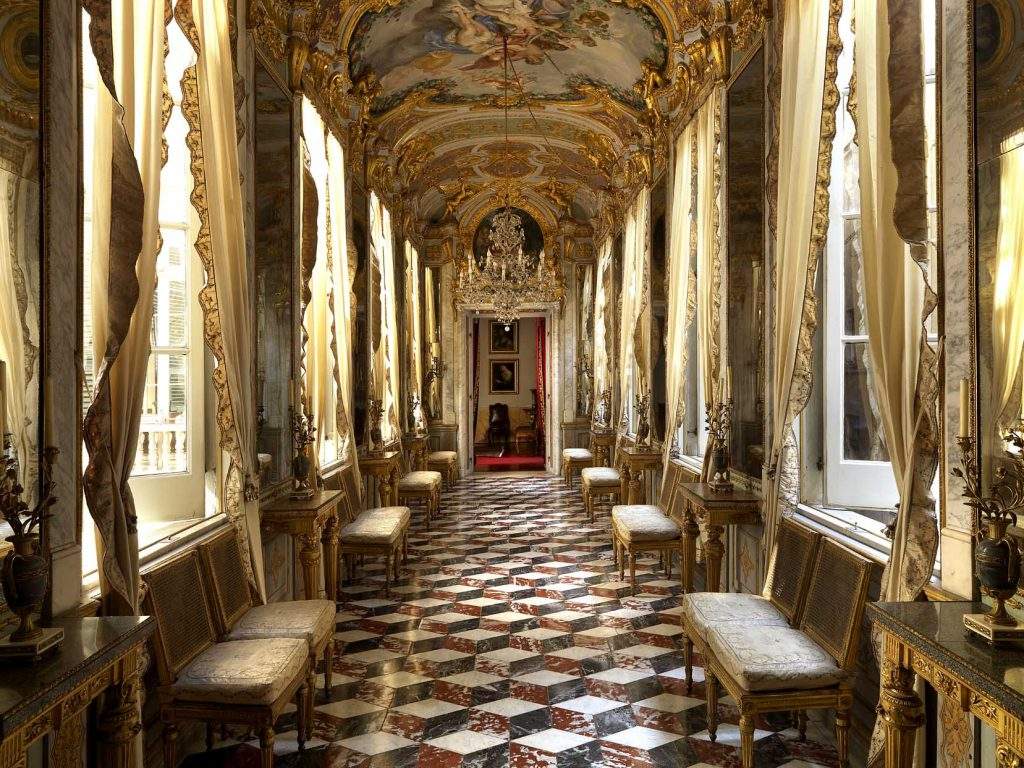Genoa, new layout for the National Gallery at Palazzo Spinola
New layout for the National Gallery of Palazzo Spinola in Genoa. The new arrangement of the museum, particularly of the third and fourth floors and theMarquis’ Apartment-the spaces where the National Gallery of Liguria is housed, which together with the historic home on the two noble floors complete the museum-is inaugurated today, Friday, March 11. The revamped exhibition itinerary is enriched by new acquisitions, generous donations and major loans, as well as works that have long belonged to the collection exhibited for the first time since recent times, significantly enriching the museum’s holdings.
The history of the Gallery began in 1958, when brothers Franco and Paolo Spinola donated their palace to the state to become a museum, stipulating that the historic floors should maintain the “character that makes it the type of the ancient Genoese palace even if all this does not agree with the modern criteria of placing paintings to put them in better evidence.” However, this constraint did not affect the third and fourth floors, which once housed the private drawing rooms, library, owners’ bedrooms, and servants’ quarters in the attic. The fire caused by the bombing of Genoa in 1941, in fact, severely damaged these rooms to such an extent that the Marquises Spinola suggested that they be used as the headquarters of the Gallery of Liguria, “the lack of which, an undoubted impairment of our Region, is greatly felt.” A place, then, where to present the works acquired by the state to enrich the artistic heritage of the Ligurian territory. It was probably Superintendent Pasquale Rotondi (1909-1991), who in 1958 received the keys to the Palace on behalf of the Italian State, who advised the marquises to include this wish in the deed of gift.
Subsequently, extensive renovations led to the opening of the Galleria Nazionale della Liguria in 1993, with a layout that declared the sharp contrast between the perfect conservation of the two noble floors and the modern reconstruction of the last two. The Gallery has since then offered an increasingly relevant overview of Ligurian artistic production between the late Middle Ages and the 20th century, with works that sometimes dialogue with what is preserved in the Palace’s rich historical picture gallery.
The important acquisitions of works made in recent years by the Ministry of Culture (see in this regard theinterview with director Gianluca Zanelli), as well as generous donations and far-sighted long-term loans from private individuals, have made it necessary to implement a project to renovate the exhibition in order to be able to present this ever-growing heritage to the public. The rearrangement project, overseen by Turin-based architecture firm Officina delle Idee, has given new prominence to the works on display, including through a new lighting system and innovative information apparatus that will enrich visitors’ experience in the museum.
The first section of the National Gallery of Liguria, set up on the first mezzanine floor (called the “Marquis’ Apartment” because, after the Palace was donated to the state, Marquis Paolo reserved its use until his death), allows for atotal immersion in the great season of the Genoese seventeenth century, through large paintings by artists such as Rubens, Gregorio and Lorenzo de Ferrari and Bartolomeo Guidobono, preserved anciently in Genoese picture galleries and in one of the Spinola house residences.
On the historical floors, on the other hand, a number of works pertaining to the National Gallery of Liguria that are closely related to what is still preserved in the Palace’s ancient rooms will be on display. This is the case, for example, of the preparatory drawings made by the Florentine painter Sebastiano Galeotti for the fresco adorning a drawing room depicting the Convite for the Marriage of Cupid and Psyche. The third floor will welcome visitors with a number of masterpieces from the 17th century: works by Giovanni Battista Paggi, Antoon van Dyck, and Bernardo Strozzi, as well as Flemish parade silverware, will allow visitors to appreciate the refined taste of some of the most important Genoese patrons of the Baroque period. In the other spaces on the floor, visitors will be able to admire, in addition to what is perhaps Palazzo Spinola’s best-known work, Antonello da Messina’sEcce Homo, other panels made between the 14th and 15th centuries that provide valuable evidence of art in Liguria before the 17th century.
Finally, the fourth floor will present to the public, in addition to the rich collection of porcelain and antique ceramics, a series of 18th-century portraits, Caravaggesque paintings of the Neapolitan school, and also works related to the vicissitudes of some important Genoese institutions and significant construction sites. In this space it will also be possible to admire some works related to important artistic events that have characterized the Ligurian territory throughout the 20th century, in some cases having come to the Gallery through donations and testamentary legacies, evidence of Palazzo Spinola’s new openness to contemporary art.
 |
| Genoa, new layout for the National Gallery at Palazzo Spinola |
Warning: the translation into English of the original Italian article was created using automatic tools. We undertake to review all articles, but we do not guarantee the total absence of inaccuracies in the translation due to the program. You can find the original by clicking on the ITA button. If you find any mistake,please contact us.




























